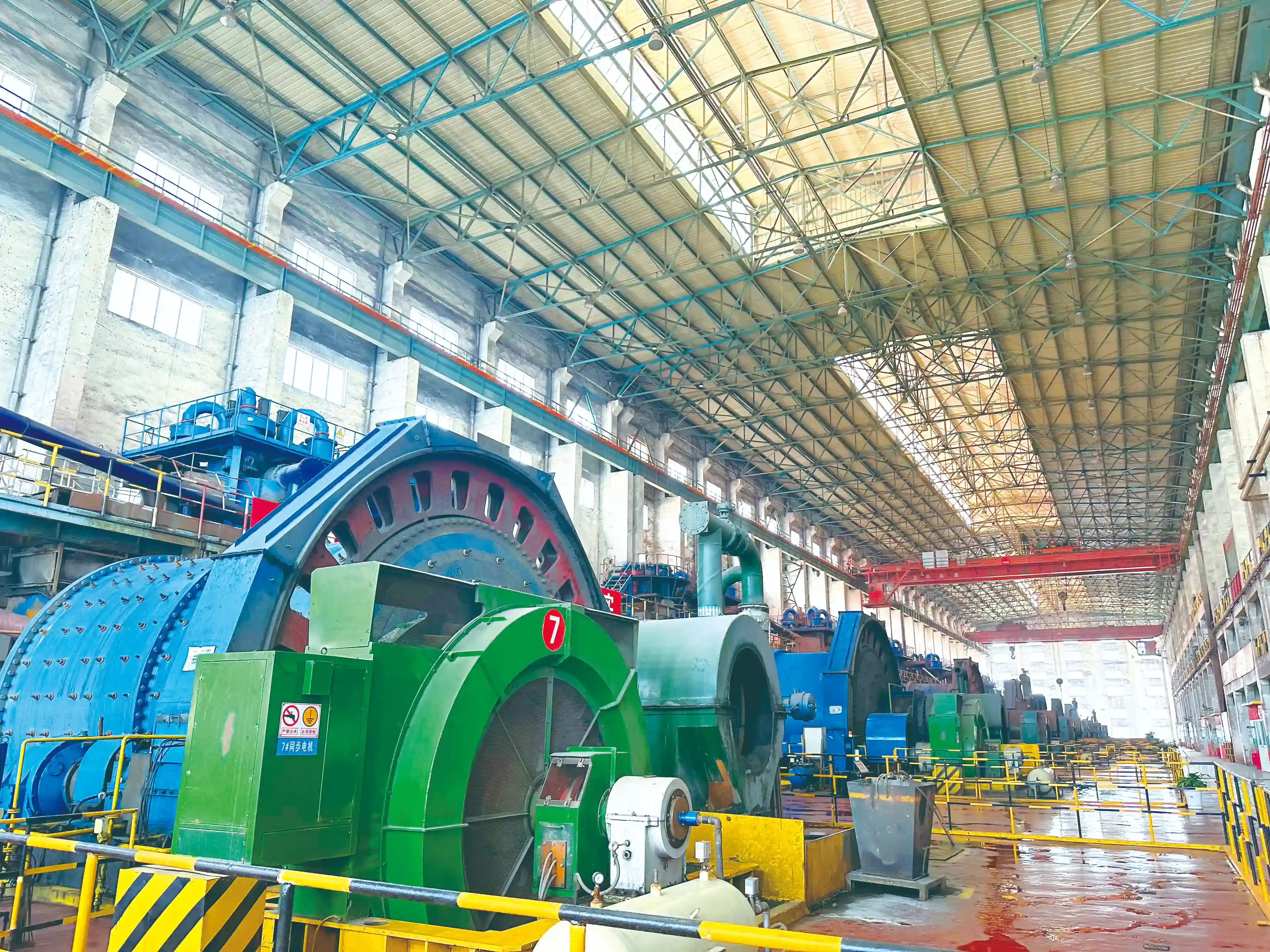Cast grinding balls play a crucial role in various industries, particularly in grinding balls mining operations. These spherical components are essential for efficient material reduction in ball mills. However, like any manufactured product, cast grinding balls can have defects that impact their performance and longevity. Understanding these common defects is vital for quality control and optimal mill operation. This article delves into the most frequent imperfections found in cast grinding balls, their causes, and methods for detection and prevention.

How to identify shrinkage cavities in cast grinding media?
Shrinkage cavities are among the most prevalent defects in cast grinding balls. These voids form during the solidification process as the metal contracts, creating small pockets within the ball's structure. Identifying these cavities is crucial for maintaining the integrity and performance of grinding media.
Visual inspection techniques for surface cavities
The most straightforward method to detect shrinkage cavities is through visual inspection. Surface cavities can often be observed with the naked eye or using magnification tools. Look for:
- Small, crater-like depressions on the ball's surface
- Irregular textures or dimples that differ from the surrounding area
- Discolored spots that may indicate subsurface voids
While visual inspection is useful for surface defects, it's important to note that many shrinkage cavities can occur internally, requiring more advanced detection methods.
Ultrasonic testing for internal cavity detection
Ultrasonic testing is a non-destructive method used to identify internal shrinkage cavities in cast grinding balls. This technique involves:
- Sending high-frequency sound waves through the ball
- Analyzing the reflected waves to detect discontinuities in the material
- Creating a visual representation of the ball's internal structure
Ultrasonic testing can reveal hidden cavities that may compromise the ball's structural integrity during use. This method is particularly valuable for quality control in grinding balls mining applications where ball failure can lead to significant downtime and production losses.
Density measurements to assess overall cavity presence
Another approach to identifying shrinkage cavities is through density measurements. This method involves:
- Weighing the grinding ball to determine its mass
- Measuring the ball's volume through water displacement or other techniques
- Calculating the density by dividing mass by volume
Balls with significant shrinkage cavities will have a lower density than expected. By comparing the measured density to the theoretical density of the material, manufacturers can identify batches of grinding balls that may contain excessive cavities.
Hardness inconsistencies: Causes and prevention in grinding balls
Hardness is a critical property for cast grinding balls, directly influencing their wear resistance and performance in milling operations. Inconsistencies in hardness can lead to uneven wear, reduced efficiency, and premature ball failure. Understanding the causes of these inconsistencies is essential for maintaining quality in grinding balls mining applications.
Chemical composition variations and their impact on hardness
One of the primary causes of hardness inconsistencies in cast grinding balls is variation in chemical composition. Factors contributing to this include:
- Inconsistent alloying element distribution during the melting process
- Impurities or contaminants in the raw materials
- Segregation of elements during solidification
To prevent these issues, manufacturers must implement strict quality control measures for raw materials and ensure thorough mixing during the melting process. Regular chemical analysis of the molten metal can help maintain consistent composition throughout production.
Cooling rate effects on microstructure and hardness
The cooling rate during solidification significantly influences the microstructure of cast grinding balls, which in turn affects their hardness. Rapid cooling typically results in finer grain structures and higher hardness, while slower cooling leads to coarser grains and potentially lower hardness. Factors affecting cooling rate include:
- Mold material and design
- Pouring temperature of the molten metal
- Ambient conditions in the casting area
To achieve consistent hardness across all grinding balls, manufacturers must carefully control the cooling process. This may involve using specialized molds, implementing temperature-controlled cooling chambers, or employing other techniques to ensure uniform solidification.
Heat treatment strategies for uniform hardness
Heat treatment is a crucial step in achieving the desired hardness and microstructure in cast grinding balls. Proper heat treatment can help mitigate inconsistencies caused by variations in chemical composition or cooling rates. Key aspects of effective heat treatment include:
- Precise control of heating and cooling rates
- Accurate temperature measurement and maintenance
- Uniform heat distribution throughout the batch of grinding balls
Advanced heat treatment processes, such as induction heating or controlled atmosphere furnaces, can help ensure consistent results across large production volumes. Regular hardness testing and microstructural analysis are essential for verifying the effectiveness of heat treatment procedures.
X-ray detection methods for internal grinding ball defects
While surface inspection and density measurements can identify many defects in cast grinding balls, internal flaws often require more advanced detection methods. X-ray technology offers a powerful tool for non-destructive testing of grinding media, allowing manufacturers to identify hidden defects that could compromise ball performance in grinding balls mining operations.
Principles of X-ray radiography for defect detection
X-ray radiography works by passing high-energy X-rays through the grinding ball and capturing the resulting image on a detector. This technique can reveal:
- Internal voids or shrinkage cavities
- Inclusions or foreign material within the ball
- Cracks or other structural discontinuities
The effectiveness of X-ray radiography depends on factors such as:
- X-ray energy and intensity
- Exposure time
- Ball size and material composition
By optimizing these parameters, manufacturers can achieve high-resolution images that clearly show internal defects in cast grinding balls.
Computed tomography (CT) scanning for 3D defect visualization
Computed tomography takes X-ray inspection to the next level by creating three-dimensional representations of the grinding ball's internal structure. This advanced technique involves:
- Taking multiple X-ray images from different angles
- Using computer algorithms to reconstruct a 3D model of the ball
- Analyzing the model to identify and measure internal defects
CT scanning offers several advantages over traditional radiography:
- More precise defect location and measurement
- Ability to visualize complex internal structures
- Enhanced detection of small or subtle defects
While CT scanning is more time-consuming and expensive than conventional X-ray methods, it provides unparalleled insight into the internal quality of cast grinding balls.
Data analysis and quality control using X-ray inspection results
The data obtained from X-ray inspection techniques can be invaluable for quality control and process improvement in grinding ball production. Key applications include:
- Statistical analysis of defect types and frequencies
- Correlation of internal defects with production parameters
- Development of acceptance criteria for grinding ball quality
By integrating X-ray inspection data into their quality management systems, manufacturers can:
- Identify trends in defect occurrence
- Optimize production processes to minimize defects
- Ensure consistent quality of grinding balls for mining and other applications
Regular X-ray inspection, combined with other testing methods, helps maintain the high standards required for grinding balls mining operations.
Conclusion
In conclusion, understanding and addressing common defects in cast grinding balls mining is essential for ensuring optimal performance in mining and other industrial applications. By implementing rigorous quality control measures, including advanced inspection techniques like X-ray radiography and CT scanning, manufacturers can produce grinding media that meets the demanding requirements of modern milling operations. As the industry continues to evolve, ongoing research and development in defect detection and prevention will further enhance the reliability and efficiency of cast grinding balls.
For more information on high-quality cast grinding balls for your mining or industrial applications, please contact our team of experts at sales@da-yang.com or sunny@da-yang.com. Our specialists are ready to assist you in selecting the optimal grinding media for your specific needs.
References
1. Smith, J.A. (2021). "Advanced Casting Techniques for Grinding Media Production." Journal of Materials Engineering and Performance, 30(8), 5672-5685.
2. Johnson, R.B., & Thompson, L.K. (2020). "Non-Destructive Testing Methods for Cast Metal Components." Materials Evaluation, 78(6), 728-741.
3. Chen, X., et al. (2019). "Effect of Heat Treatment on Microstructure and Mechanical Properties of High-Chromium Cast Grinding Balls." Metallurgical and Materials Transactions A, 50(3), 1442-1456.
4. Williams, E.M., & Davis, G.R. (2018). "X-ray Computed Tomography for Industrial Applications: Recent Advances and Future Trends." NDT & E International, 94, 30-45.
5. Lopez, A.J., & Martinez, C.F. (2022). "Quality Control Strategies in Grinding Media Manufacturing: A Comprehensive Review." International Journal of Mineral Processing, 170, 107-123.
6. Patel, S.K., & Gupta, N. (2020). "Optimization of Casting Parameters to Minimize Shrinkage Defects in High-Chrome Grinding Balls." Foundry Research Journal, 42(4), 215-229.








